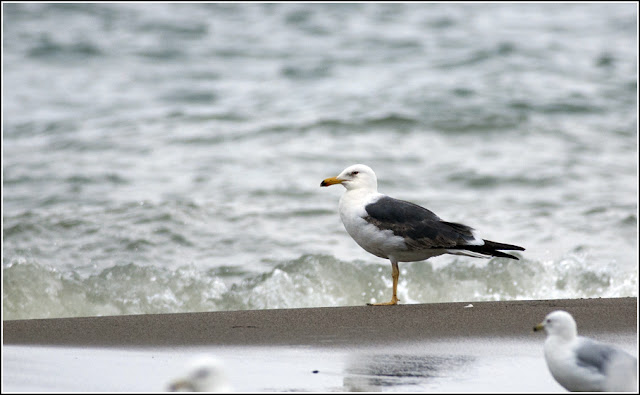After my deerfly-ridden adventure at the Couture Dyke, I headed into the park for the rest of the afternoon. It was a hot and sunny day and bird song was almost non-existent. Compared to the rush of spring migration in April, May, and early June; with 100+ migrant species in the park on the best days; the summer months at Pelee are relatively slow. Thirty-seven species of warblers pass through Point Pelee annually, yet in the summer, the only regular species are Yellow Warbler, American Restart, and Common Yellowthroat.
Some species are more common here in the southern reaches of Ontario than elsewhere in the province - things like Blue-gray Gnatcatcher, Orchard Oriole, andYellow-billed Cuckoo. In some years, Yellow-breasted Chat and Prothonotary Warbler nest here as well. As I slowly drove down the park road towards the tip, I heard an Eastern Towhee singing. I had no idea they bred here.
On this visit, the first stirrings of fall migration were already underway. Yellow Warblers were stacking up in the south end of the park - they are one of the early migrant warblers. Orioles were also present in large numbers, and it won't be long until the last Orchard Oriole vacates the province.

Arriving at the Visitor's Centre, I walked down the west beach footpath where I turned my attention to butterflies. To say last summer was fantastic for butterflies would surely be an understatement. I recall one weekend where I was able to see Fiery Skipper (50+), White-M Hairstreak (3), Gray Hairstreak (including 57 in one day), Sachem (5), Horace's Duskywing, American Snout, Common Checkered-skipper (50+), Common Buckeye (abundant), Dainty Sulfur (10+), and others in a good day or two of butterflying. However, this year's relatively late spring and wet summer had stunted the flight of these migrants and apart from a single Common Buckeye, I did not notice any of the above. Instead, I focused on the resident butterflies. I was very happy to have a little photo-shoot with a Hackberry Emperor, though it was made a little difficult since it kept landing on me.

At one point, I was chasing a butterfly when a grouse-like bird flushed from the path! It was a baby Wild Turkey, the first I have seen I believe. Kinda ugly....
The day was growing uncomfortably hot inside the park. With the birdsong almost nonexistent and butterflies quite scarce, I made my way out of the park. One stop I made was Towle harbour, where a conglomeration of terns and gulls were present. I carefully scanned the 16+ Black, 50+ Forster's, and 1 Common Tern for anything unusual but came up empty. The adult Great Black-backed Gull with a broken wing was still hanging on.
From here I headed to Windsor to spend the night. The next post will cover the butterflying we did in Ojibway Prairie.





















































